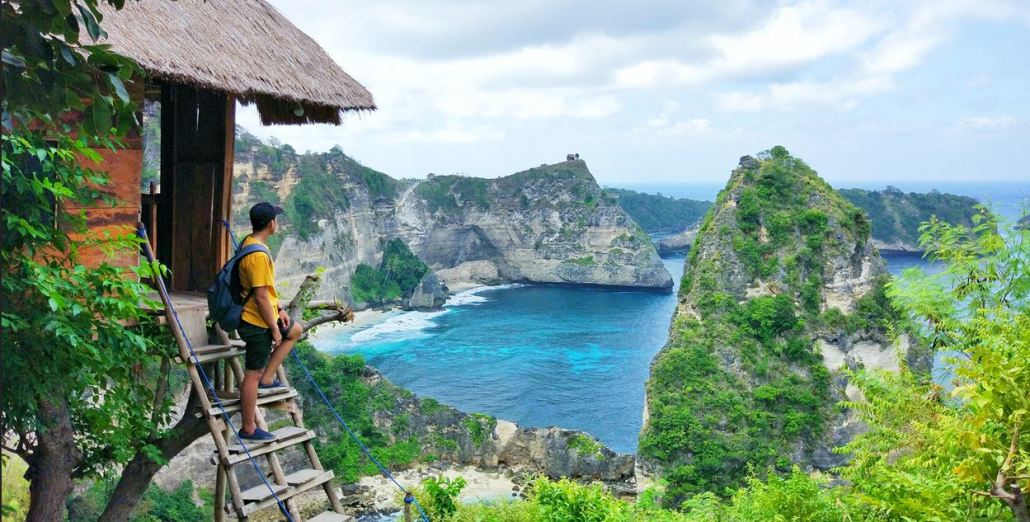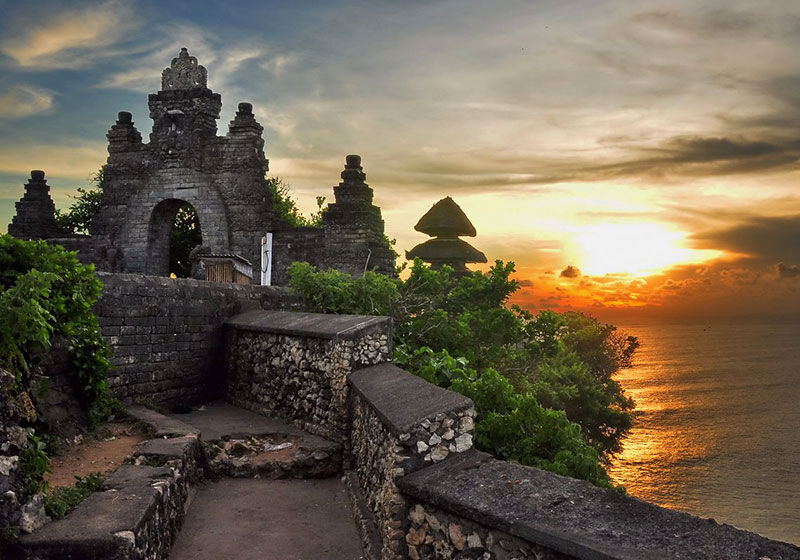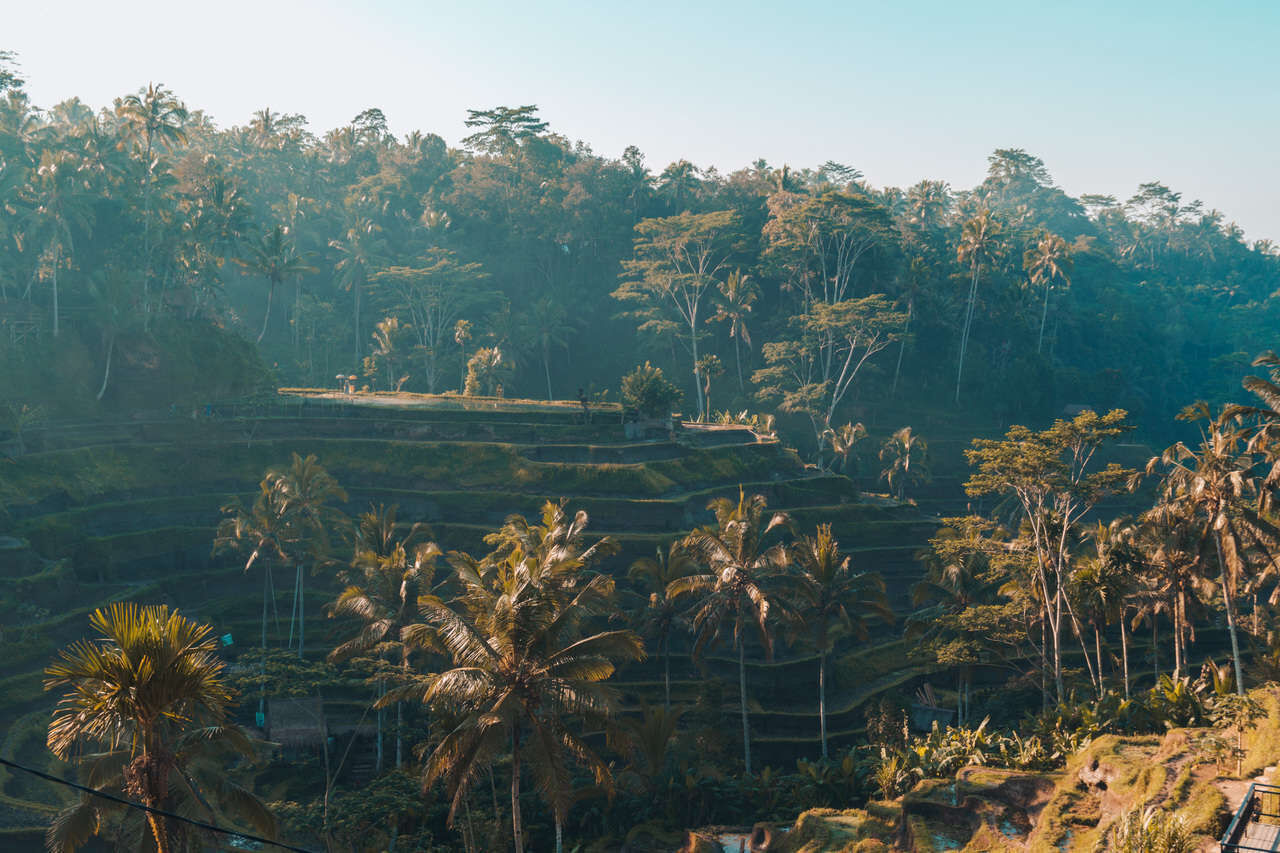Plan your Indonesia adventure with our 2025 weather guide! Learn about seasonal conditions across Bali, Jakarta, and Yogyakarta, packing tips, eco-friendly Indonesia Tours, and top providers for a seamless experience with Indonesia Travel. Start your journey today!
Author Bio: Written by Tony Bùi, with over 20 years of experience in the travel industry, personally guiding and organizing tours for over 100,000 travellers across Southeast Asia. This guide draws from firsthand insights, guest feedback from Legend Travel Group surveys, and official sources like weather25.com, world-weather.info, easeweather.com, weather2travel.com, climate-data.org, and indonesia.travel. Weather forecasts based on historical patterns and latest data as of August 27, 2025; verify before travel. Reflects Indonesia’s updated travel regulations.
Indonesia, an archipelago of over 17,000 islands located between 6°N and 11°S, 95°E and 141°E, with elevations from sea level to over 4,000 meters, is renowned for its diverse landscapes, from Bali’s beaches to Yogyakarta’s temples and Jakarta’s urban vibrancy climate-data.org. A travel hotspot, Indonesia attracts visitors for its surfing, cultural festivals, and historical sites like Borobudur culturetrip.com. Whether joining guided Indonesia Tours or exploring independently, understanding Indonesia’s weather is crucial for planning activities such as beach outings, temple visits, or festivals like Nyepi in Bali. Indonesia’s tropical climate features a dry season (April–October) and a wet season (November–March), with temperatures ranging from 20°C to 34°C and significant rainfall in January weather25.com. This guide provides weather-based travel tips, cultural insights, and eco-friendly Indonesia Travel options for a seamless and culturally respectful journey across key destinations like Bali, Jakarta, and Yogyakarta.
Following Indonesia’s updated travel regulations in 2025, key destinations are accessible via international airports like Ngurah Rai (Denpasar, Bali), Soekarno-Hatta (Jakarta), or Adisucipto (Yogyakarta), with local transport like scooters, taxis, or buses. This guide blends seasonal advice, packing tips, and sustainable Indonesia Travel ideas for a worry-free experience.
Indonesia’s weather varies by region but generally features a dry season (April–October, 20–32°C, low rain) ideal for outdoor activities like surfing in Bali or temple visits in Yogyakarta, and a wet season (November–March, 24–34°C, high rain) suited for indoor cultural experiences or early morning outings. Most nationalities enjoy visa-free entry for 30 days; others require a visa ($35–$50). Key sites like Borobudur cost $25 (375,000 IDR) for entry; guided tours cost $15–$80 (225,000–1,200,000 IDR), and local purchases range from $0.20–$10 (3,000–150,000 IDR). Verify weather forecasts and visa requirements via indonesia.travel or accuweather.com.
 Immerse in Indonesia’s lush cultural heritage (Source: Internet)
Immerse in Indonesia’s lush cultural heritage (Source: Internet)Dry Season (April–October):
Temperature: 20–32°C; coolest in July (down to 20°C in Bali’s highlands, 24°C in Jakarta) with comfortable evenings weather25.com. Daytime highs average 30°C in Bali, 32°C in Jakarta, and 31°C in Yogyakarta world-weather.info.
Conditions: Sunny with moderate humidity (50–75%), minimal rainfall (2–5 rainy days/month, 20–50 mm/month), and mostly clear skies, ideal for surfing in Bali’s Kuta, temple visits in Yogyakarta’s Borobudur, or city exploration in Jakarta easeweather.com. August averages 27–30°C in Bali with 10 hours of sunshine daily weather2travel.com.
Precipitation: Low, 0–2 mm/day; driest in August (20–40 mm/month in Bali, 30–50 mm in Jakarta) climate-data.org.
UV Index: High (8–11); sunscreen ($1 or 15,000 IDR) and hats ($2 or 30,000 IDR) essential weather2travel.com.
Conditions for Visiting: Perfect for outdoor activities like beach trips, temple exploration, and festivals; peak tourist season with clear weather weather25.com.
Wet Season (November–March):
Temperature: 24–34°C; warm and humid (75–90%) with frequent rain (15–20 rainy days/month, 100–300 mm/month); lush greenery around Bali’s rice terraces and Yogyakarta’s temples world-weather.info. January averages 31°C daytime highs and 24°C lows in Bali, 33°C in Jakarta, and 32°C in Yogyakarta easeweather.com.
Conditions: Heavy showers and occasional thunderstorms, peaking in January (up to 300 mm/month, 18–20 rainy days); suitable for early morning temple visits or indoor cultural experiences like museums in Jakarta or art galleries in Ubud climate-data.org. Slippery paths in rural areas require caution weather25.com.
Precipitation: Moderate to heavy, 5–15 mm/day; wettest in January world-weather.info.
UV Index: Moderate to high (4–8); rain gear essential weather2travel.com.
Conditions for Visiting: Ideal for budget travelers, indoor activities, or early morning outdoor trips; fewer crowds but wet conditions easeweather.com.
Bali: Tropical monsoon climate with dry season (20–32°C, low rain) ideal for surfing and temple visits; wet season (24–33°C, high rain) suits indoor cultural activities. August is driest; January is wettest weather25.com.
Jakarta: Hotter and more humid (24–34°C year-round) with a shorter dry season (June–August, 30–50 mm/month); wet season peaks in January (200–300 mm/month). Urban setting requires heat precautions world-weather.info.
Yogyakarta: Similar to Bali but slightly cooler in highlands (20–32°C); dry season ideal for Borobudur visits; wet season brings lush landscapes but slippery paths easeweather.com.
Outdoor Activities: Dry season is best for surfing in Bali, temple visits in Yogyakarta, and city tours in Jakarta; wet season suits early morning outings or indoor cultural experiences like visiting museums or art galleries weather25.com. August offers optimal weather for outdoor exploration world-weather.info.
Festivals: Bali’s Nyepi (March, lunar calendar) enjoys transitioning weather; Jakarta’s Independence Day (August) aligns with dry season; Yogyakarta’s Sekaten festival (varies) features cultural events indonesia.travel.
Health: Wet season’s humidity increases mosquito activity; use repellent ($1 or 15,000 IDR). Dry season’s heat requires hydration; air quality in Jakarta may be poor during wet season accuweather.com.
Tip: Check daily forecasts via accuweather.com or weather25.com 1–2 weeks before travel; pack for regional and seasonal conditions.
Cultural etiquette ensures a respectful experience during Indonesia Tours, especially when adapting to weather conditions. Here’s your guide, based on current norms as of August 27, 2025:
Greetings: Offer a “selamat pagi” (good morning) with a slight nod; use both hands when paying for entrance fees or purchases to show respect, especially in wet weather when handling damp items.
Dress: Wear modest clothing covering shoulders and knees for temple visits (e.g., Borobudur in Yogyakarta, Uluwatu in Bali); a lightweight sarong ($2 or 30,000 IDR) aligns with local norms culturetrip.com. In the dry season, pack lightweight, breathable clothing; in the wet season, bring quick-dry clothing and a raincoat ($2 or 30,000 IDR).
Behaviour: Maintain a quiet demeanor in temples and cultural sites; ask permission before photographing locals or rituals, especially during festivals; avoid loud behavior in communal spaces like Bali’s rice terraces or Jakarta’s markets. Avoid pointing feet at sacred objects, as this is disrespectful in Indonesian culture. A guest shared: “Respecting local customs made our rainy temple visit serene.”
Customs: Temple entry costs $2–$25 (30,000–375,000 IDR); donations ($0.20–$1 or 3,000–15,000 IDR) appreciated; remove shoes in temples and mosques; avoid touching sacred items; tipping is not mandatory but appreciated ($0.20–$1 or 3,000–15,000 IDR); avoid public criticism of the government (penalties apply). Avoid littering to preserve temples and beaches culturetrip.com.
Tip: Say “terima kasih” (thank you) to locals or guides; use eco-friendly practices like reusable water bottles ($2 or 30,000 IDR) to support sustainable Indonesia Travel; carry rain gear in the wet season or sun protection in the dry season. Tony Bùi notes: “In 20 years guiding, I’ve seen weather-prepared travellers thrive in Indonesia’s vibrant cultural heritage.”
General Tips:
Language: Carry a phrase card ($1 or 15,000 IDR) for Indonesian basics like “terima kasih”; English is common in tourist areas like Bali and Jakarta but limited in rural Yogyakarta culturetrip.com.
Respect: Follow temple and market rules (avoid touching sacred items); avoid disrupting festivals; support local artisans with fair purchases in markets.
Navigation: Use offline maps (Maps.me) with “Bali,” “Jakarta,” or “Yogyakarta” for navigation, especially in rainy conditions.
Eco-Tip: Opt for scooters ($5–$10 or 75,000–150,000 IDR/day) or bicycles ($2–$5 or 30,000–75,000 IDR/day) to reduce emissions, aligning with Indonesia’s green tourism goals.
 Photograph the festive spirit of Indonesia’s traditions (Source: Internet)
Photograph the festive spirit of Indonesia’s traditions (Source: Internet)Below is a curated list of tour options tailored to Indonesia’s weather, focusing on Bali, Jakarta, and Yogyakarta, based on the latest data from weather25.com, world-weather.info, easeweather.com, weather2travel.com, and climate-data.org. Confirm schedules and prices before booking.
Details: Explore Bali’s Uluwatu Temple, Jakarta’s National Monument, or Yogyakarta’s Borobudur independently; adapt to dry season (temple visits and outdoor activities), wet season (indoor cultural activities or early morning outings); suitable for prepared travellers; low to moderate difficulty.
Weather Tips: Explore in dry season for clear conditions; focus on early morning visits (6:00 AM–10:00 AM) in wet season with rain gear; prioritize indoor activities like museums during heavy rain.
Schedule: Daily; Bali temples open 7:00 AM–7:00 PM ($2–$4 or 30,000–60,000 IDR); Jakarta’s National Monument open 8:00 AM–6:00 PM ($1 or 15,000 IDR); Borobudur open 6:00 AM–5:00 PM ($25 or 375,000 IDR); vibrant during Bali’s Nyepi (March, lunar calendar) or Yogyakarta’s Sekaten (varies).
Cost: Temple/monument entry: $1–$25 (15,000–375,000 IDR); donations: $0.20–$1 (3,000–15,000 IDR); transport (bicycle: $2–$5 or 30,000–75,000 IDR/day); local purchases: $0.20–$10 (3,000–150,000 IDR).
Location: Bali, Jakarta, Yogyakarta, Indonesia.
Eco-Friendly Note: Use bicycles or scooters to reduce emissions; avoid littering in temple grounds or urban areas.
Tip: Check forecasts at accuweather.com; visit early in wet season to avoid rain; a guest noted: “Self-guided exploration was seamless with weather planning.”
Details: 1-day group tour visiting Bali’s Uluwatu Temple or Yogyakarta’s Borobudur; includes English-speaking guide, transport from Denpasar or Yogyakarta, lunch, and entry fees; low difficulty.
Weather Tips: Outdoor temple visits in dry season; early morning focus in wet season with rain gear; indoor cultural activities during heavy rain.
Schedule: Daily; departs 7:00 AM from Denpasar or Yogyakarta hotels; returns by 4:00 PM.
Cost: $25–$40/person (375,000–600,000 IDR, includes entries).
Pick-up/Drop-off: Hotels in Denpasar, Yogyakarta, or Jakarta.
Eco-Friendly Note: Group transport with fuel-efficient vehicles minimizes impact; supports local artisans.
Tip: Book via legendtravelgroup.com; a guest noted: “Legend’s tour adapted perfectly to wet season conditions.”
Details: 1-day guided tour visiting Bali’s Tegalalang Rice Terraces or Jakarta’s Old Town with cycling; includes English-speaking guide, transport from Denpasar or Jakarta, lunch, and entry fees; low to moderate difficulty.
Weather Tips: Best in dry season for clear cycling conditions; early morning visits in wet season with rain gear; cultural focus during heavy rain.
Schedule: Daily; departs 6:30 AM from Denpasar or Jakarta hotels; returns by 4:00 PM.
Cost: $30–$50/person (450,000–750,000 IDR, includes entries).
Pick-up/Drop-off: Hotels in Denpasar, Jakarta, or Yogyakarta.
Eco-Friendly Note: Small groups reduce environmental impact; supports local communities.
Tip: Book via localvietnam.com; a guest noted: “The combo tour was ideal for sunny or rainy days.”
Details: 2–3 day tour combining Bali’s Uluwatu Temple, Yogyakarta’s Borobudur, and Jakarta’s National Museum; includes English-speaking guide, transport, accommodation, meals, and entry fees; low to moderate difficulty.
Weather Tips: Focus on outdoor activities in dry season; early morning or covered activities in wet season; cultural visits in rainy conditions; guides adjust itineraries for weather.
Schedule: Daily; departs from Denpasar, Jakarta, or Yogyakarta hotels; returns after 2–3 days.
Cost: $80–$200/person (1,200,000–3,000,000 IDR, includes entries).
Pick-up/Drop-off: Hotels or custom locations in Denpasar, Jakarta, or Yogyakarta.
Eco-Friendly Note: Uses eco-lodges and fuel-efficient transport; supports local communities.
Tip: Book Indonesia Tours via legendtravelgroup.com or WhatsApp (+84 825862222); a guest noted: “The multi-day tour was a weather-smart cultural journey.”
Self-Guided Exploration: Flexible and cost-effective, ideal for weather-prepared independent travellers.
Group Cultural Tours: Affordable and guided, perfect for weather-adapted cultural insights.
Combo Cultural and Adventure Tours: Blend temple visits with adventure experiences for a comprehensive journey.
Multi-Day Cultural Tours: Offer in-depth exploration with weather-smart itineraries.
Eco-Friendly Note: Group and multi-day tours use fuel-efficient transport or bicycles, supporting Indonesia’s green tourism goals.
 Start your journey with Indonesia’s vibrant glow (Source: Internet)
Start your journey with Indonesia’s vibrant glow (Source: Internet)Key weather-based travel opportunities include:
Bali’s Nyepi: Typically March (lunar calendar), festive with temple rituals; transitioning weather (24–33°C); check dates at indonesia.travel.
Jakarta’s Independence Day: August, vibrant with parades; dry season (24–34°C); check dates at indonesia.travel.
Yogyakarta’s Sekaten: Varies (lunar calendar), cultural festival with temple events; dry season (20–32°C); check dates at indonesia.travel.
Temple Visits and Outdoor Activities: April–October for clear conditions; November–March possible with early morning visits, especially August for optimal weather weather25.com.
Dry season (April–October, 20–32°C) is ideal for temple visits, surfing, and festivals across Bali, Jakarta, and Yogyakarta. Wet season (November–March, 24–34°C) suits indoor cultural experiences or early morning outings. Morning visits (6:00 AM–10:00 AM) avoid heat or rain. Verify forecasts via accuweather.com.
Dry Season (April–October): Pack lightweight, breathable clothing; sunscreen ($1 or 15,000 IDR); hat ($2 or 30,000 IDR); light jacket ($5 or 75,000 IDR) for cooler evenings in Bali’s highlands or Yogyakarta.
Wet Season (November–March): Pack quick-dry clothing; raincoat or umbrella ($2 or 30,000 IDR); waterproof shoes ($5 or 75,000 IDR); mosquito repellent ($1 or 15,000 IDR).
Forecast Checks: Monitor daily forecasts 1–2 weeks before travel via accuweather.com or weather25.com; adjust plans for rain or heat.
Eco-Tip: Use reusable water bottles ($2 or 30,000 IDR) and totes ($1 or 15,000 IDR) to reduce waste; opt for bicycles or scooters for sustainable travel.
Tip: Book tours with flexible itineraries; plan early morning visits in wet season; pack sun protection for dry season; carry small IDR notes for purchases; confirm visa requirements ($35–$50 if needed).
 Embrace the vibrant energy of Indonesia’s cultural heritage (Source: Internet)
Embrace the vibrant energy of Indonesia’s cultural heritage (Source: Internet)Pack for a comfortable, sustainable visit:
Documents: Passport (valid 6+ months), Indonesia visa ($35–$50 if required), wallet ($2–$3 or 30,000–45,000 IDR), tour bookings.
Clothing: Modest clothing covering shoulders and knees; lightweight sarong ($2 or 30,000 IDR) for temple visits; quick-dry clothing and raincoat ($2 or 30,000 IDR) for wet season; lightweight clothing and light jacket ($5 or 75,000 IDR) for dry season; waterproof shoes ($5 or 75,000 IDR); hat ($2 or 30,000 IDR).
Essentials: Reusable water bottle ($2 or 30,000 IDR); snacks ($0.20–$1 or 3,000–15,000 IDR, e.g., pisang goreng); small backpack ($2 or 30,000 IDR); sunscreen ($1 or 15,000 IDR); insect repellent ($1 or 15,000 IDR).
Tech: Phone with translation apps (e.g., Google Translate); charger ($5–$10 or 75,000–150,000 IDR); local SIM ($2–$3 or 30,000–45,000 IDR); waterproof camera ($20 or 300,000 IDR) for photos (with permission).
Eco Items: Reusable tote ($1 or 15,000 IDR) for market purchases; phrase card ($1 or 15,000 IDR) with Indonesian basics.
Extras: Small IDR notes for donations or purchases; small first aid kit ($2 or 30,000 IDR); umbrella ($2 or 30,000 IDR) for wet season; money belt ($2 or 30,000 IDR) for valuables. Tip: Pack light (1 small bag, max 5 kg); reusable items support sustainability.
Travel Tour Costs
Self-Guided Exploration: Temple/monument entry: $1–$25 (15,000–375,000 IDR); donations: $0.20–$1 (3,000–15,000 IDR); transport (bicycle: $2–$5 or 30,000–75,000 IDR/day).
Group Cultural Tours: $25–$40 (375,000–600,000 IDR, includes entries).
Combo Cultural and Adventure Tours: $30–$50 (450,000–750,000 IDR, includes entries).
Multi-Day Cultural Tours: $80–$200 (1,200,000–3,000,000 IDR, includes entries). Weather-Related Costs
Raincoat or Umbrella: $2 (30,000 IDR).
Sunscreen or Insect Repellent: $1 each (15,000 IDR).
Waterproof Shoes or Quick-Dry Clothing: $2–$5 (30,000–75,000 IDR). Other Costs
Local Snacks (e.g., pisang goreng, sate lilit): $0.20–$1 (3,000–15,000 IDR).
Souvenirs (e.g., Batik, handicrafts): $0.20–$10 (3,000–150,000 IDR).
Donations: $0.20–$1 (3,000–15,000 IDR). Total Daily Cost (Per Person)
Budget: $10–$30 (self-guided, snacks, transport).
Mid-range: $30–$60 (group tour, purchases).
Luxury: $60–$120 (private tour, premium souvenirs). Tip: Budget $10–$120 for tours, weather items, or transport, and $0.20–$10 for purchases or add-ons.
Weather Tips: Check forecasts 1–2 weeks before travel; plan outdoor activities in dry season; focus on early morning visits in wet season with rain gear; prioritize indoor activities during heavy rain accuweather.com.
Etiquette: Use “selamat pagi”; dress modestly for temples; stay respectful in temples and markets; avoid littering in cultural or urban areas.
Access: Choose self-guided visits for flexibility, group tours for weather-adapted insights, or multi-day tours for deeper exploration.
Schedules: Temples open 6:00 AM–7:00 PM; markets open 6:00 AM–6:00 PM; peak crowds in dry season (April–October); book early for festivals (March, August, varies).
Sustainability: Use bicycles or scooters; carry reusable items; support local artisans with fair purchases.
Navigation: Use offline maps (Maps.me) with “Bali,” “Jakarta,” or “Yogyakarta.”
Safety Note: Secure valuables with a money belt ($2 or 30,000 IDR); beware of pickpocketing in markets; carry emergency numbers (Police: 110, Tourist Police: +62 361 754 599 in Bali).
Health Note: Use bottled water; apply mosquito repellent in wet season; stay hydrated in dry season; avoid stray animals travel.state.gov.
What is the weather like in Indonesia? Dry season (April–October, 20–32°C) is sunny and ideal; wet season (November–March, 24–34°C) is rainy with lush scenery weather25.com.
When is the best time to visit Indonesia? Dry season for temple visits and outdoor activities; wet season for budget travel and indoor experiences; August for optimal weather world-weather.info.
How do I prepare for Indonesia’s wet season? Pack raincoat, umbrella, quick-dry clothing, and waterproof shoes; focus on early morning activities easeweather.com.
Is Indonesia’s weather safe for travel? Yes, but wet season brings slippery paths and flooding risks; dry season requires sun protection; check forecasts via accuweather.com.
How do I check Indonesia’s weather? Use accuweather.com or weather25.com for daily forecasts.
Are eco-friendly tours available? Yes, group tours with fuel-efficient transport or bicycle tours; check localvietnam.com.
Enhance your weather-prepared Indonesia journey with eco-conscious tours from Legend Travel Group:
Indonesia Cultural Eco-Tour ($25–$40/person, 1 day): Guided temple and market tour with sustainable practices in Bali or Yogyakarta.
Indonesia Cultural and Adventure Trail ($80–$150/person, 2 days): Explore temples and cultural sites with eco-friendly transport.
Indonesia Explorer ($150–$250/person, 3 days): Multi-site adventure across Bali, Jakarta, and Yogyakarta with eco-lodges and community-focused activities. Prices include guides, transport, and fees; group discounts available. Explore options at legendtravelgroup.com or contact sales@legendtravelgroup.com / WhatsApp (+84825862222) for your Indonesia Travel plans.
Understanding Indonesia Weather with cultural etiquette—modest attire, polite greetings like “selamat pagi,” and weather-smart planning—unlocks a vibrant, tropical journey through this Indonesian archipelago. With tour costs from $15–$80, eco-friendly Indonesia Tours, and attractions like Bali’s Uluwatu Temple, Yogyakarta’s Borobudur, and Jakarta’s National Monument, this trip offers adventure and sustainability. Whether choosing a self-guided or guided experience with Indonesia Travel, check forecasts via accuweather.com and respect local customs for the best experience. Safe travels!
Sources:
Weather Information: weather25.com, world-weather.info, easeweather.com, weather2travel.com, climate-data.org
Cultural and Travel Details: culturetrip.com, indonesia.travel
Favorite experiences booked by travelers